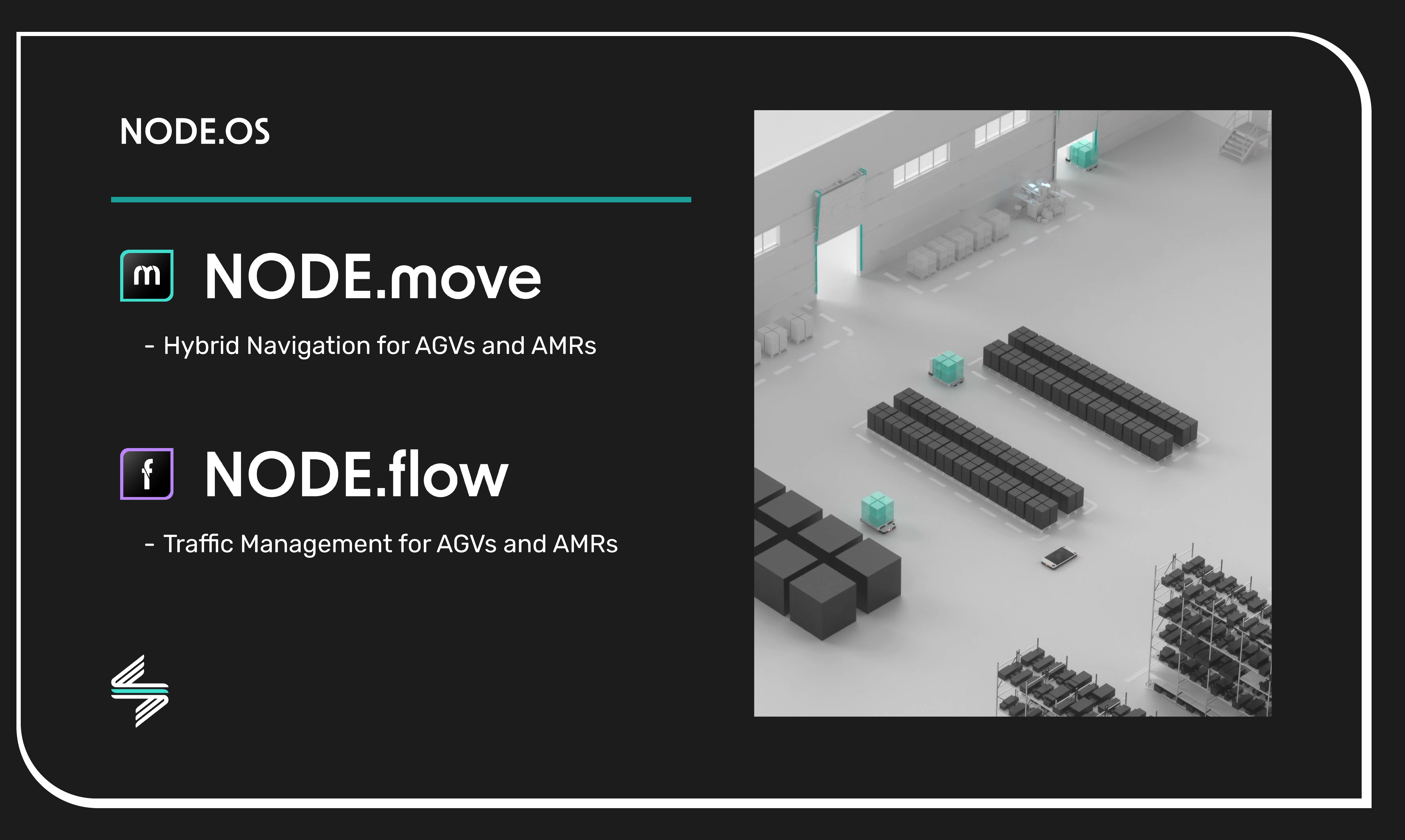Next-generation NODE.move and NODE.flow – AGV and AMR navigation finally becomes one: Structured, scalable, and adaptive.
For years, businesses implementing mobile robotics have faced a fundamental choice: AGV-style navigation, which ensures structured, rule-based movement but lacks flexibility and adaptability, or AMR-based free navigation, which adapts dynamically to its environment but often sacrifices predictability. Both approaches have their strengths, yet neither fully addresses the operational demands of modern intralogistics, where efficiency, adaptability, and scalability are equally critical.
The new NODE.move and NODE.flow bridges this gap by combining the precision and structure of AGV navigation with the adaptability of AMRs. It enables deterministic movement along predefined paths while allowing robots to dynamically react to real-time obstacles within designated lane boundaries. This next-level navigation model eliminates the rigidity of traditional AGVs without introducing the unpredictability often associated with free-roaming AMRs.
System architecture: Roads and road maps
NODE.move and NODE.flow introduces software-defined roads and road maps, establishing structured pathways while enabling controlled flexibility. Robots follow predefined, rule-based routes but can adjust dynamically within these virtual lanes to navigate around obstructions without disrupting overall flow.
To factiliate deployment and commissioning, the road maps do not have to be manually crafted but are auto-generated based on the environment layout and minimal user input. This significantly reduces commissioning effort while allowing applications to scale efficiently without requiring extensive infrastructure modifications.
Key functionalities and features:
- Hybrid navigation – Combining structured AGV movement with AMR flexibility
- Rule-based, adaptive motion control – Predictable movement with real-time obstacle handling
- Automated road map generation – Simplifies setup and accelerates deployment
- Scalable system architecture – Supports both single-robot navigation (NODE.move) and multi-robot coordination (NODE.flow)
- Configurable autonomy levels – Adapts navigation behavior to operational needs
- VDA 5050 compatibility – Ensures seamless integration with third-party fleet management systems
Scalable navigation with optimized fleet coordination
As fleets grow, efficient motion planning and traffic coordination become increasingly complex. NODE.flow builds on the hybrid navigation approach of NODE.move, extending it from individual robots to entire fleets. By integrating structured lane-based navigation with adaptive decision-making, NODE.flow enables seamless fleet-wide orchestration, ensuring minimized congestion, deadlock prevention, and optimized traffic flow. This scalable architecture allows for high-performance navigation across dynamic industrial environments, balancing predictability and flexibility in fleet operations.
Advances in mobile robot navigation – whether AGV or AMR
NODE.move and NODE.flow redefines how autonomous mobile robots operate within industrial workflows, integrating predictability, adaptability, and scalability into a single navigation solution. It enables structured movement where necessary, flexibility where beneficial, and seamless fleet expansion when required.
Experience NODE.flow live at LogiMAT 2025, hall 8 booth 8F25, and explore our new hybrid mobile robot navigation.
